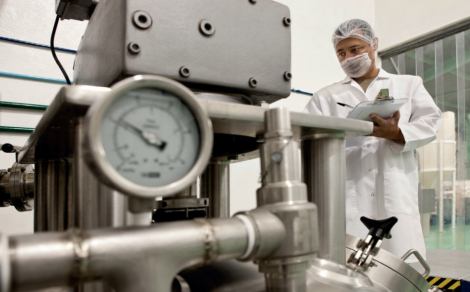Demystifying air quality

With compressed air often referred to as the fourth utility and the uses for compressed air growing every day, it means that there is a diverse variation in air quality requirements.
The British Compressed Air Society (BCAS) offers a best practice guide, entitled The Filtration and Drying of Compressed Air’, designed to help operators and specifiers make an informed choice on which type of compressed air treatment equipment is best suited to the air quality required – available for download at www.bcas.org.uk/airtreatment.
It covers the most typical industrial applications for compressed air operating at a pressure of around 7 bar g to 20 bar g (100 – 300 psi), generally considered as low pressure (LP) air.
Air treatment basics
The concentration of airborne contaminants present during the compression process means that the compressed air will invariably need some form of treatment before the point of use.
As technology for compressed air treatment continues to evolve, there is now a wide range of equipment available which can satisfy the most demanding of compressed air treatment needs. However, the selection of the right equipment can be a complex task, affecting everything from maintenance schedules to the ongoing costs associated with achieving the required standards, while avoiding generating excessive purge air and preventing significant pressure drops.
This best practice guide helps demystify not only the selection of the right air treatment equipment, such as filters and dryers, but also explains which contaminants can be present. It also details the relevant standards that may assist in the development of an air treatment system.
Compressed air contamination and its sources
Compressed air is not clean. It contains many hazards in the form of contamination. In a typical compressed air system, there are 10 main contaminants that require treatment if the system is to operate safely, efficiently and cost effectively.
Commonly, compressed air contaminants are combined into three distinct categories, which are:
Particles – (Including viable and nonviable microbiological organisms)
Water
Oil
ISO 8573-1, the international standard for compressed air purity (quality), refers to the main contaminants in this format.
When selecting purification equipment, it must be remembered that contaminants will be in one of three different phases (states of matter). For example, water and oil in a compressed air system will be found in liquid form, as an aerosol (fine mist) and in a vapour (gaseous) phase. A different purification technology will be required depending upon the phase of the contaminant (i.e. liquid, aerosol or vapour).
Selecting the correct air purity (quality)
Depending on the application for which the compressed air is to be used, there are number of different compressed air standards and best practice guidelines which can assist the end user. Prior to the purchase of new compressed air treatment equipment, the user should assess carefully the air purity (quality) requirements of the system or application.
Specifying air treatment equipment
Whether designing new systems, or reviewing existing systems, the first step should be to define the precise compressed air purity (quality) requirements, ideally using the ISO8573-1 standard. To achieve the degree of air purity (quality) specified by ISO8573-1, a careful approach to system design, commissioning and operation must be adopted. It is recommended that compressed air is treated:
-
PPMA 2025
23 September, 2025, 9:30 - 25 September, 2025, 16:00
NEC, Birmingham UK -
Advanced Engineering Show 2025
29 October, 2025, 9:00 - 30 October, 2025, 16:00
NEC, Birmingham UK










